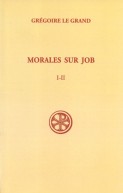SC 500 L'Unité de l'Église
Collection Sources chrétiennes - N° 500
350 pages - mars 2006
40,00€
Le « De ecclesiae catholicae unitate » est un écrit de circonstance, né de la persécution de Dèce, en 250-251, et de ses retombées : à Rome comme en Afrique, prétentions des « confesseurs » qui réconciliaient les « lapsi » (« ceux qui avaient failli », en sacrifiant aux idoles) sans attendre l'aval de l'évêque ; schismes qui, la persécution s'éloignant, opposèrent laxistes autant que rigoristes à la prudence épiscopale envers les « faillis ». Contre ces divisions Cyprien prêche l'« unitas » : l'Église, locale et universelle, est unique et une. Mais l'« unitas », tâche à réaliser, est d'abord une grâce. En sa substance, l'Église est la présence même, face à un monde vieux et désarticulé, du Dieu unique et un dans la pluralité des Personnes. La vision de Cyprien, théologale et liturgique, adosse le mystère de l'Église au mystère de Dieu : par le ministère de l'évêque légitime, le corps ecclésial, dans l'Eucharistie, s'unit au Christ souffrant et ressuscité, d'où jaillit la vie trinitaire. Le traité prend alors un relief singulier. S'il n'expose pas toute l'ecclésiologie de l'auteur (malgré les apparences, il ne dit rien du rôle de l'Église romaine), il éclaire sa pensée et son action, jusqu'en leur ambivalence : primat de l'amour, qui est Dieu, et exclusivisme, qui refuse aux dissidents le salut, offert seulement dans la communion catholique visible. Écrit de circonstance, le « De unitate » est ainsi un point nodal. Ses limites, à comprendre dans l'histoire, contraignent aujourd'hui de relire la tradition qui en dépend (Augustin lui-même !) ; ses intuitions, retrouvées par les catholiques à Vatican II, sont de nature à stimuler la méditation sur l'Église et (paradoxe ?) à favoriser le travail œcuménique.
--
“De ecclesiae catholicae unitate” was written in response to an event: the persecution of Christians by Decius in 250-251, and its consequences. Firstly, in Rome as in Africa, the appearance of “confessors” who, when the persecution ended, claimed to grant forgiveness to the “lapsi” (those who had “lapsed” by making sacrifices to idols) without waiting for the bishop’s approval: secondly, schisms that opposed the ruthless and the indulgent in regard to the Church’s cautious attitude to the “lapsed”. Against these divisions, Cyprian preaches “unitas”: the Church, local and universal, is one and unique. But “unitas”, a state yet to be accomplished, is first and foremost a grace. In its substance, the Church is the very presence of one unique God in a plurality of Persons, facing an old, chaotic world. Cyprian’s theological and liturgical vision builds the mystery of the Church on the mystery of God: through the ministry of the lawful bishop, the ecclesiastical body unites in the Eucharist with the suffering and the risen Christ, from whom Trinitarian life springs forth. The treaty then takes on unique depth. Although it does not expose all the author’s ecclesiology (in spite of appearances, it says nothing of the role of the Roman Church) it does elucidate his thinking and his acts, even in their ambivalence: the primacy of love, which is God, and the exclusivity of salvation, refused to dissidents and accorded only to those in visible catholic communion. A document written in response to precise historical circumstances; yet the ‘De unitate’ is also a milestone. In order to understand its scope, readers must resituate it in the historical context and reread the tradition to which it gave birth (even Augustine!). Its intuitions, revisited by Catholics in Vatican II, stimulate meditation on the Church and (paradoxically?) encourage ecumenical work.
--
“De ecclesiae catholicae unitate” was written in response to an event: the persecution of Christians by Decius in 250-251, and its consequences. Firstly, in Rome as in Africa, the appearance of “confessors” who, when the persecution ended, claimed to grant forgiveness to the “lapsi” (those who had “lapsed” by making sacrifices to idols) without waiting for the bishop’s approval: secondly, schisms that opposed the ruthless and the indulgent in regard to the Church’s cautious attitude to the “lapsed”. Against these divisions, Cyprian preaches “unitas”: the Church, local and universal, is one and unique. But “unitas”, a state yet to be accomplished, is first and foremost a grace. In its substance, the Church is the very presence of one unique God in a plurality of Persons, facing an old, chaotic world. Cyprian’s theological and liturgical vision builds the mystery of the Church on the mystery of God: through the ministry of the lawful bishop, the ecclesiastical body unites in the Eucharist with the suffering and the risen Christ, from whom Trinitarian life springs forth. The treaty then takes on unique depth. Although it does not expose all the author’s ecclesiology (in spite of appearances, it says nothing of the role of the Roman Church) it does elucidate his thinking and his acts, even in their ambivalence: the primacy of love, which is God, and the exclusivity of salvation, refused to dissidents and accorded only to those in visible catholic communion. A document written in response to precise historical circumstances; yet the ‘De unitate’ is also a milestone. In order to understand its scope, readers must resituate it in the historical context and reread the tradition to which it gave birth (even Augustine!). Its intuitions, revisited by Catholics in Vatican II, stimulate meditation on the Church and (paradoxically?) encourage ecumenical work.
- Dimensions : 125x195x25
- ISBN : 9782204081320
- Poids : 370 grammes
Avec la collaboration de : Claude Dagens, Michel Poirier, Paolo Siniscalco, Paul Mattei
DU MÊME AUTEUR
Le Christ dans l'histoire selon le pape Pie XI - CF 265
de Marie-Thérèse Desouche
784 pages - nov. 2008
> VOIR TOUS LES LIVRES DE l'AUTEUR











